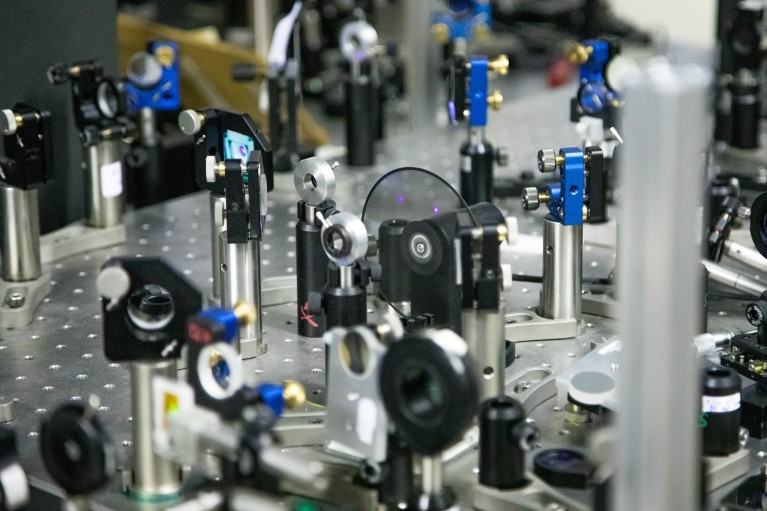
Credit: Politecnico di Milano.
Using an innovative material made a single layer of atoms, researchers from the Politecnico di Milano, and the Friedrich Schiller University of Jena have created a switch that can change the properties of a light beam at exceptionally high speeds.
The researchers devised a method to manipulate second-harmonic generation, a process that produces light whose frequency is twice that of the starting light source, for example turning invisible infrared light into intense visible light. “During the process, two infrared low energy photons are converted into one visible high energy photon, while the initial energy of the entire process is conserved,” says Giulio Cerullo, a professor of physics at Politecnico di Milano.
Such optical processes have applications in laser technologies, materials processing and telecommunications, and scientists are looking for new materials that can help control them. In this case they used a semiconductor called molybdenum disulfide (MoS2), that belongs to the same class of two-dimensional crystals as graphene.
In the work, published in Nature Photonics1, the team demonstrated that MoS2, when hit by a light beam, allows modulation of the second-harmonic generation process at an unprecedented speed: light can be completely switched on and off on a timescale shorter than picoseconds, that is one millionth of one millionth of a second.
“This will enable, for example, the transmission of data in the form of light pulses which can be controlled very quickly and efficiently, or provide a building block for the generation of structured light, the new frontier in optical communications”, says Giancarlo Soavi, at the Friedrich Schiller University Jena, and co-leader of the study.
